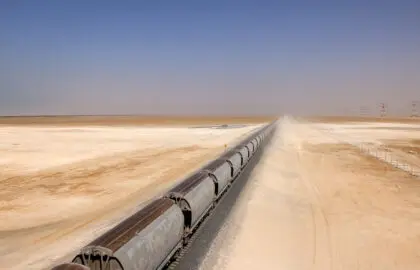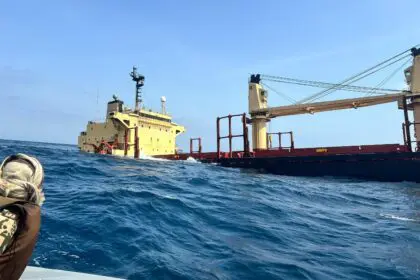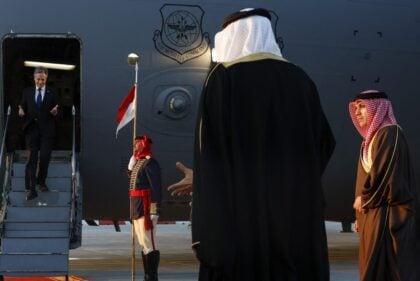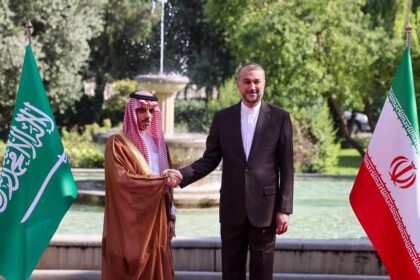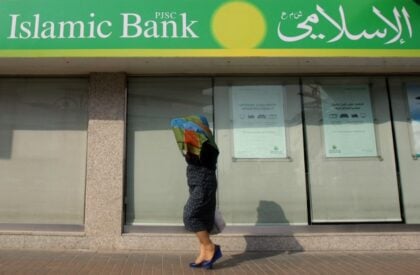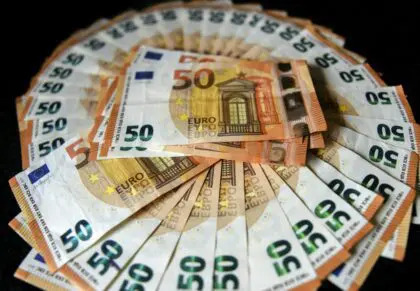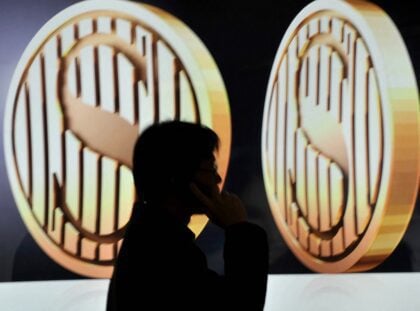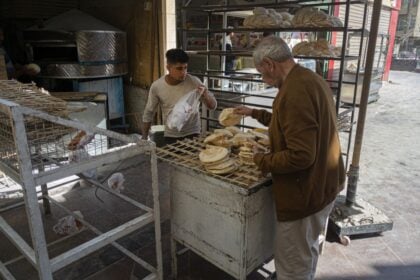
Introduction
The establishment of the Gulf Cooperation Council (GCC) is inseparable from the overall regional political challenges that faced all its member states when the council was established in May 1980.
A year before, on the eastern bank of the Persian Gulf, Iran witnessed an Islamic revolution that overthrew the Pahlavi royal regime, which had ruled it since 1925. That raised the concerns of the several royal Gulf regimes, fearing a probable similar fate. Then the Gulf states’ concerns grew that this regime might export its revolution to neighbouring countries.
The leader of the Islamic Revolution himself – Imam Ayatollah Ruhollah Khomeini – openly declared his theory to spread this model in the world through the concept of Wilayat al-Faqih. In short, the Gulf states viewed the Iranian revolution as an existential threat, especially if it revived the agenda of political Islam in the region.
In practice, the Gulf states had other concerns about the revolutionary political Islam projects. And with a Sunni discourse addressing the Sunni Gulf residents, the Muslim Brotherhood paved the way for those projects in the Arab world.
The first conflict between the Muslim Brotherhood and the Gulf monarchies happened after the Sunni group welcomed the Islamic Revolution. That highlighted the Gulf states’ concerns after the revolution in Iran, mainly because of their intersection with the projects of Sunni political Islam.
Those developments coincided with the occupation of the Masjid al-Haram in Mecca, by the Salafi preacher Juhayman al-Otaibi, and a group of armed men. From there, he led a military rebellion against the authority, which exacerbated the Kingdom of Saudi Arabia’s fear of Islamic movements of all kinds.
On the other hand, Egyptian President Anwar al-Sadat deviated from the Arab consensus by signing the Egyptian-Israeli peace treaty in March 1979 and normalising diplomatic relations with Israel in January 1980. From the beginning, the Gulf states, especially Saudi Arabia, expressed their condemnation, leading to diplomatically and economically boycotting Egypt, voicing their rejection of Egypt’s endeavour.
However, the Gulf states’ concerns were not exclusive to Sadat’s neglecting the Palestinian cause or “betraying the Arab countries“. according to the Saudi government’s narrative, but rather to the polarisation caused by Sadat’s move among the Arabs. Sadat’s rush towards peace with Israel bolstered the role of the ‘Steadfastness and Confrontation Front‘ countries that reject peaceful solutions with Israel, including Iraq, Syria, and Libya. These political regimes were governed by extremist ideologies towards the West, which threatened the interests of the more conservative Gulf states that were trying to balance their Arab role with a good relationship with the United States.
In short, political dangers surrounded the Gulf states from all sides in the early 1980s, including the ambitions of the new revolutionary Islamic regime in Iran, and the awakening of political Islam’s projects, to Sadat’s ventures and the polarisation it provoked. Then the Iran-Iraq war confirmed the possibility of all these contradictions erupting.
In these circumstances, establishing the Gulf Cooperation Council allowed the Arab Gulf to unite and face these challenges, especially after the Arab League failed to play this role after the intense divisions that followed the Egyptian-Israeli peace treaty.
As it was clear from the beginning, security was the primary concern of the six countries that founded the Council, namely Kuwait, Kingdom of Saudi Arabia, United Arab Emirates, Qatar, Bahrain and Oman. For this reason, and about two years after establishing the Council, the member states decided to form the ‘Peninsula Shield Force’ to “create a force capable of carrying out the tasks required to defend the security of the Gulf, and deterring any aggression against its states.”
Peninsula Shield Force: A Limited, Symbolic Force?
Establishing the Peninsula Shield Force was approved in November 1982, at the third session of the GCC held in Bahrain, based on a recommendation made by the Defence ministers of the Council’s member states. In 1983, the decision was implemented, with the first joint training manoeuvres for the military units included in the Peninsula Shield Force.
Since that time, the founders have set very ambitious objectives for this force, including “protecting the Arab Gulf security from any external interference” and “focusing on current and expected threats” to define general objectives and working to achieve them according to a clear strategy.”
The Force’s objectives also included forming the fundamental base for security, internally and externally, with its various components for the member states.
But these grand ambitions, which portrayed the Peninsula Shield as a military force capable of facing the imminent security and military challenges, did not match the modest capabilities allocated to this force.
The Force was limited to 5,000 troops stationed in the Hafr al-Batin region in northeastern Saudi Arabia when it was launched. That is why it could not play any significant role in countering the Iraqi invasion of Kuwait, despite receiving the official reinforcement request from Kuwait.
After the invasion, the Peninsula Shield returned to playing a symbolic role within Desert Storm, which the United States led to expel the Iraqi army from Kuwait. Thus, these developments contradicted the most prominent objectives of the Peninsula Shield Force, which is to protect the Gulf from any foreign interference.
Practically, the Peninsula Shield was only able to perform this task as an auxiliary force to the external intervention of the United States.
In October 2002, after realising the limitations of the Peninsula Shield capabilities, the Gulf states, in a meeting between their Defence ministers, formulated plans to increase the number of this force to about 22,000, with an integrated military city in the Hafr al-Batin. However, these plans faltered as the Gulf states failed to mobilise more than 5,000 soldiers to serve in Saudi Arabia.
For this reason, in December 2005, Saudi Arabia proposed to restructure this force so that the units operating within it would be stationed in their countries of origin, provided that they respond to the unit’s leadership when necessary. The GCC approved this proposal in 2008, which allowed it to later increase the number of troops to about 30,000.
Now, the Gulf states were able to add additional units to the force without transferring them outside their countries.

The most prominent intervention of the Peninsula Shield Force was in March 2011. About 1,000 Saudi soldiers and 500 Emirati policemen entered Bahraini territory to support the regime in quelling the demonstrations, especially in Manama, which witnessed sit-ins at the Pearl Roundabout.
The Saudi regime faced harsh international criticism due to this intervention and was even met with protests within the Kingdom. It seemed clear that these forces were closer to interfering in the internal balance between the authority and the opposition rather than protecting the Gulf security from foreign interference. According to critics, the Peninsula Shield has turned into a foreign intervention force that tampers with internal affairs, contradicting its declared objective.
In contrast, the GCC, especially Saudi Arabia and Bahrain, defended the intervention as a process that embodies the solidarity of the Gulf states in the face of any events that could destabilise their political regimes or internal security, which, in their words, falls within the objectives of the council.
Some believe that the Gulf states were concerned about the Bahraini protests because of their Shiite nature. However, Kuwait’s dispatch of only its naval forces that could not clash with the demonstrators, and Qatar’s contentment with sending some liaison officers, were indications of how problematic that intervention was.
It also indicates Qatar’s and Kuwait’s embarrassment from this position, which may be linked to the overt US dissatisfaction and the international stances against this military operation.
Other than that intervention, the force has played no significant role in dealing with the Gulf states’ major security or military challenges. Even when the Yemeni government requested the intervention against the Houthi expansion, Saudi Arabia preferred to keep the force apart from this operation as much as possible to send another military alliance within operation Decisive Storm.
Observers pointed out that the Saudis were aware of the force’s limited capabilities and the difficulty of depending on it in a complex and thorny task such as the war against the Houthis in Yemen. It might be that Saudi Arabia learned from late Egyptian President Gamal Abdel Nasser’s lesson when he intervened in the Yemeni civil war in the 1960s and embroiled Egypt with heavy losses. That might have prompted Saudi Arabia to avoid implicating such a modest force in a fierce war.
To sum it up, the Peninsula Shield Force’s defect from the beginning was its limited capabilities compared to the existing military challenges, which soon took a more severe course, such as the Yemeni war. The Peninsula Shield Force could not cope with these emerging challenges and develop its ability to keep up with them.
GCC Joint Defence Agreement
The second defensive tool presented by the GCC for the Arab Gulf states is the GCC Joint Defence Agreement, signed in 2000 at the meeting of the council held in Manama, Bahrain. From the outset, the agreement aimed to establish a joint defence integration among the Arab Gulf states to consider any attack on any state an attack on all of the GCC states.
The treaty also provided for the development of the joint Peninsula Shield Force and military training and cooperation to establish a base for military industries in the Gulf states. In other words, the treaty’s objective was to complement the Peninsula Shield Force by developing practical programmes and additional steps to interpret this military cooperation into actual results instead of just assembling joint forces.

Later, in 2013, the Gulf states developed a framework for military coordination by appointing a unified military central command to coordinate their armies and proactive defensive measures. As part of this initiative, the Gulf states founded a Gulf Academy for Strategic and Security Studies, a joint police agency, the GCCPOL, in addition to a unified centre for maritime operations in 2014.
In parallel, they formulated several plans to link military aircraft operations with air defence systems and develop secure communications projects. The objective was to connect the armed forces spread across the Gulf states through an optical fibre network.
However, most of these initiatives remained out of practice throughout the military tensions. During the Yemen war, which Saudi Arabia considers a proactive defensive war against the Houthi expansion, Qatar participated alongside the Saudi-led coalition at the beginning of the military campaign in 2015, when the direction of the war aligned with Qatari foreign policy.
However, as political differences between Qatar and Saudi Arabia rose to the surface and the influence they had on the priorities of the two sides in the Yemeni war, Qatar took the initiative to withdraw and called for dialogue to end the war peacefully.
Even concerning the UAE, the Yemeni armed forces it supported differed from those that were officially supported by Saudi Arabia, which meant the two countries’ military objectives conflicted, despite their convergence to fight the Houthis as a common enemy – noting that the UAE’s Yemeni allies militarily clashed several times with Saudi Arabia’s local allies. If anything, this signifies the extent of the discrepancy in this affair between the two countries.
In other words, despite the defence treaty and approving the unified military command, the solidarity of the Gulf states was driven by interests and political orientations, while every political contrast affected their military performance and solidarity during conflicts.
Thus, all the steps aimed at achieving defensive integration were nothing but a cover that would allow joint military intervention when political circumstances permit. But that is not the case when interests do not converge. With the constant change of challenges, the treaty and all defensive measures could not keep pace and ensure a standard defence policy isolated from the constantly fluctuating political interests.
Economic Cooperation
Apart from the limited results of security and defence cooperation, the GCC achieved fruitful cooperation among its six members, perhaps because their economic interests aligned, given that their economies share many common characteristics. For example, the Arab Gulf states established the “GCC Free Trade Area” (FTA) in 1983, which allowed the import and export of the products of these countries among themselves without needing a local agent or taking any measures except for presenting the certificate of origin.
The FTA also exempted agricultural, industrial and natural products from customs duties. Thanks to the FTA, the Gulf states increased their trade exchange volume between them from less than $6 billion in 1983 to roughly $15.1 billion in 2002 and up to $90 billion in 2019.
In 2002, the GCC developed their economic cooperation by transforming the FTA into a “Gulf Customs Union.” Through this union, they agreed to set a unified customs tariff when dealing with other countries outside the GCC, in addition to a unified customs system. Thus, regardless of their origin, all types of goods can flow freely between the GCC states, after paying the unified customs duty, if applicable.
Regarding energy, the GCC has completed distinguished projects, such as the electrical Interconnection Grid, which allowed them to exchange their surplus electricity production. Through this project, the GCC countries set out to discuss agreements with neighbouring countries, such as Egypt, Jordan and Iraq, to connect their electrical grids to the Gulf interconnection grid, and export electrical energy when needed, or export it to other neighbouring countries through their networks, which is an ongoing process.
Regarding transportation projects, the GCC states agreed to proceed with a railway project capable of connecting the eastern coasts of the six countries, which would later enhance trade exchanges and reduce costs.
With all these promising developments, political differences remained latent, challenging the credibility of these understandings at some stages, as was the case during the Gulf crisis. At that point, and apart from the Customs Union Agreement that completely freed cross-border trade, Saudi Arabia and its allies imposed a comprehensive economic boycott against Qatar, leading to a complete closure of borders.
Thus, no matter how serious it may seem, this so-called economic integration can be affected in an instant by the political contrasts of the council’s member states. Practically, the council has overcome the boycott’s Gulf division crisis, but the conflicts that caused the crisis are still unresolved, which portends a similar recurrence in the future.
Regarding the tax policy, the GCC approved the principle of a unified value-added tax in 2016 and is currently studying several other unified taxes, such as the luxury tax. In 1988, the GCC approved the bill of equality for citizens of the GCC states in tax fees imposed on their work when they move to work in another Gulf country. This bill has allowed the Gulf countries to exchange expertise and manpower in many economic sectors at a low cost and with the most minor burdens on the citizens.
The Unified Currency: A Suspended Project
Despite these achievements, many joint economic projects are still suspended due to the lack of the required consensus among the GCC states. For example, the Gulf Cooperation Council was unable to move forward collectively with the unified currency project, despite the body’s approval in 2002 of a timetable for launching it.
In 2006, Oman withdrew from this project due to its inability to abide by the criteria of the Currency Union, which issues currency, without the other GCC states objecting to proceeding with the unified currency without Oman.
Then, in 2009, the UAE decided to withdraw from the project in protest of choosing Riyadh as the location of the joint central bank.
Thus, the Monetary Union project, which was supposed to launch the unified currency, turned into a four-pronged project limited to Kuwait, Saudi Arabia, Bahrain and Qatar. That cost the idea its momentum.
In any case, launching a unified currency is still attached to several challenges, most notably the need for the countries participating in the union to agree on a unified policy for interests and monetary reserves, an exchange rate system and its priorities, and how to deal with payments deficits when they occur.
This type of understanding is often associated with endless problems given the varying economic objectives of the countries involved in this joint venture and the nature of the financial challenges they are dealing with, which creates obstacles against a single currency and a unified monetary policy.
The Dream of Political Unity
Since founding the GCC, the main objective has been to gradually expand the scope of Gulf solidarity, realising the dream of political unity through a political union similar to the European Union.
However, the Saudi enthusiasm to move in this direction in 2013 was confronted by the explicit Omani reservations, which amounted to threatening to withdraw from the GCC when it was transformed into a political union.
It was clear that the Omani reservation to this idea was linked primarily to the Sultanate’s desire to maintain a margin of independence from Saudi Arabia’s policy in the region.
Oman has always maintained a quiet, neutral and independent policy from the rest of the GCC states. This policy allowed the Sultanate to play many conciliatory political roles in the region, such as hosting part of the US-Iranian negotiations on the Iranian nuclear programme.
For this reason, it was clear that Oman wanted from the beginning to maintain its good relations and common interests with Iran in particular, which prompted it to distance itself from any political union that Saudi Arabia could lead, given that it is eager to confront the Iranian role in the region.
Apart from Oman’s initial reservation at the time, which would obstruct a decision of this kind, given the need of unanimity among the member states, it is inevitable that a development of this kind will be complex in light of the divisions that have affected the Arab Gulf arena recently, especially the Saudi-Qatari dispute.
Forming a political union requires the commitment of all member states to precise mechanisms for implementing the union’s decisions by submitting to the block’s governance.
In light of the current lack of trust as a result of the experience of boycotting Qatar, it is difficult to expect all GCC countries, especially Qatar, to be handed a union formula in which Saudi Arabia has the upper hand – knowing that the UAE, in turn, has begun to search for a space to implement its agenda in the region, without being tied exclusively to the Saudi role, but rather in contradiction with the Saudi role in some cases.
Thus, it seems that the UAE is warning against falling exclusively under the Saudi influence in the region, just like Oman and Qatar.
Challenges and Obstacles
The GCC is still captive to political differences and the narrow domestic interests of its member states, which has so far curbed the council’s expansion in establishing a common defence policy capable of protecting the Arab Gulf without relying on foreign interference, or rather, an American intervention in particular.
At the same time, the council did not succeed in developing economic integration to reach an actual joint monetary and economic policy due to the lack of trust between the founding member states, which are still afraid of being tied to each other in the long term in such crucial issues.
Even concerning transitioning to a political union stage, it is not easy to expect a step of this kind soon for the same reasons. Thus, the council becomes a prisoner of a thorny equation, with the growing economic, political and security challenges surrounding it, in return for the limited role that it can play.
On the other hand, some council member states are going too far outside the Arab Gulf consensus, such as the UAE normalising relations with Israel, which radically opposes the other member states’ stances against normalisation, such as the case with Kuwait.
The Arab Gulf states are also conflicting in their approach to some hot regional issues, such as the Yemeni file or the relationship with the Egyptian regime and all the Saudi support it is getting, which in turn will thwart the harmony of the GCC countries and the possibility of the council turning into a political union shortly.
However, the Arab Gulf states will undoubtedly continue to cooperate through the council to unite together when the dangers reach the red line that cannot be crossed: the possibility of overthrowing the government in one of the member states or changing the identity of the ruling family in it.



